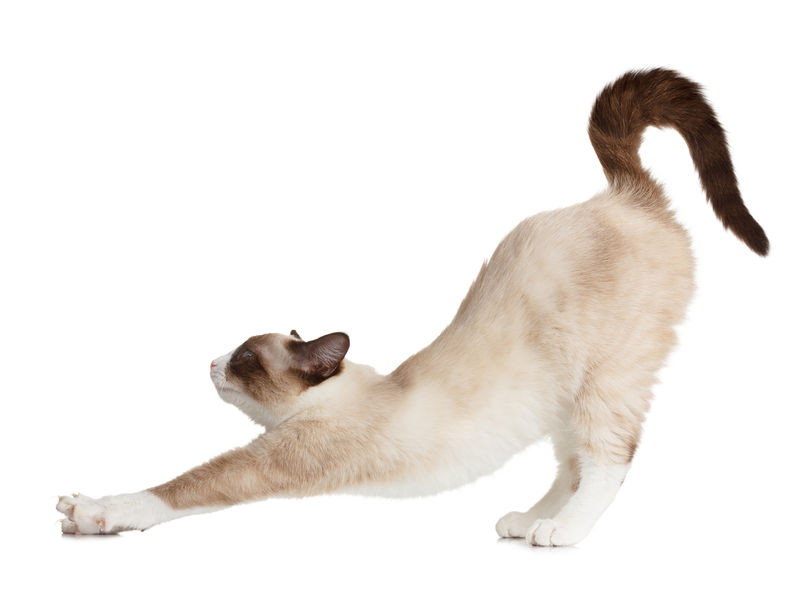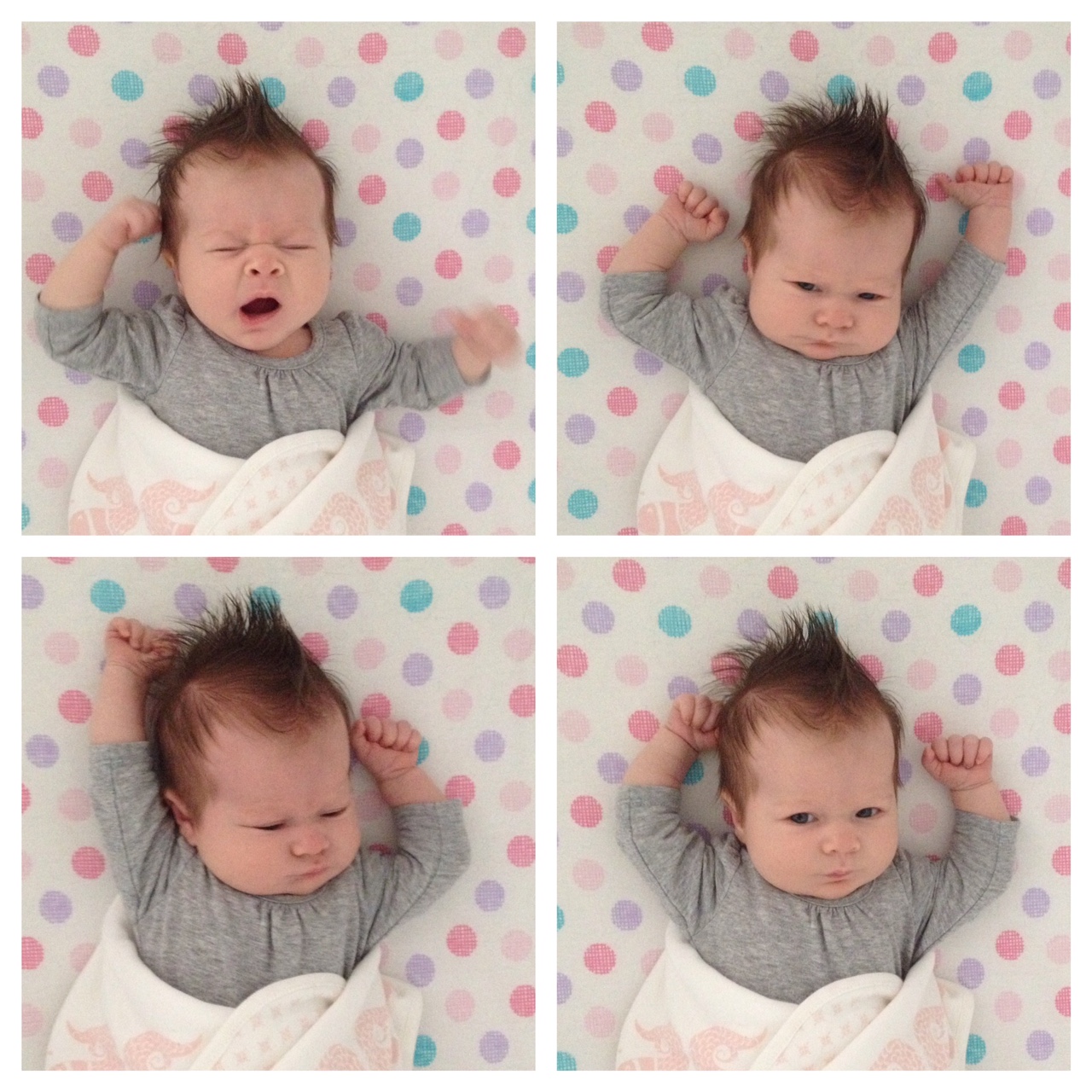Puede escuchar el podcast de Sarah sobre este tema aquí:
¿Qué es la pandiculación?
Pandiculación is generally defined as the act of stretching oneself and yawning, especially upon waking. However, our automatic pandicular response has far more significance than simply prompting us to stretch and yawn.
As you’ll learn in this post, pandiculation is a fundamental part of our neuromuscular functioning. In fact, when it comes to maintaining our health, pandiculation is equal to exercise and eating a balanced diet. When we stop pandiculating, our muscles become tight; we experience pain, poor posture, and limited movement; and over time, the structure of our body breaks down.
¿Cómo funciona la pandiculación natural?
Pandiculation is our nervous system’s natural way of waking up our sensorimotor system and preparing us for movement. Humans, along with all vertebrate animals, tend to automatically pandiculate when we wake up or when we’ve been sedentary for a while. If you’ve ever seen a dog or cat arch their back when they get up from a nap, or watched a baby stretch their arms and legs as they wake up, you’ve witnessed the pandicular response. It may look like a stretch, but when we pandiculate, we’re actually contracting muscles that have been inactive.


La pandiculación es nuestra respuesta innata a las sensaciones de falta de movimiento ya la tensión que se acumula en nuestros músculos, que a menudo van de la mano.
Pandiculation sends biofeedback to our nervous system regarding the level of contraction in our muscles, thereby helping to prevent the buildup of chronic muscular tension. This is an extremely important function of the pandicular response. A pandiculation contracts and releases muscles in such a way that the gamma loop, a feedback loop in our nervous system that regulates the level of tension in our muscles, is naturally reset. This resetting reduces muscular tension and restores conscious, voluntary control over our muscles.
Preventing the buildup of tension in our muscles is critical to maintaining healthy posture and movement throughout our lives. Fetuses have been observed pandiculating in the womb, showing how deeply ingrained the pandicular response is in our nervous system and how fundamental it is to our musculoskeletal functioning.
Desafortunadamente, a medida que envejecemos y desarrollamos formas habituales de pararse y moverse, nuestra respuesta pandicular natural generalmente no puede contrarrestar todo el aprendizaje que ocurre en nuestro sistema nervioso. Nuestros estilos de vida sedentarios y repetitivos son bastante diferentes a los estilos de vida activos de nuestros antepasados. Tendemos a acumular tensión muscular a un ritmo mucho más rápido que ellos porque nos movemos menos y tendemos a tener menos variedad en nuestros movimientos. A medida que aumentamos gradualmente la tensión muscular y perdemos la conciencia y el control de nuestros músculos, nuestra respuesta pandicular a menudo se inhibe.
La pandiculación como movimiento voluntario
Thomas Hanna, the founder of Clinical Somatic Education, studied neurophysiology and the effects of the pandicular response. He explored how pandiculation directly addressed the habitual muscular tension that was the underlying cause of his clients’ chronic pain and posture and movement issues. Hanna developed hands-on movements and self-care exercises that made use of the pandicular response.
These “voluntary pandiculations” begin with a concentric contraction: tension in the muscle increases while the muscle fibers shorten, bringing the origin and insertion of the muscle closer together. This is followed by an eccentric contraction, in which muscles are engaged while they lengthen under load. Picture what your biceps are doing as you lower a dumbbell, for example (Illustration 10). The muscles are slowly lengthening, but are still engaged as long as you hold the weight.
A voluntary pandiculation must be performed very slowly and consciously so that the nervous system is able to sense and integrate the biofeedback that the movement provides. The opposing muscles should not engage during the eccentric contraction phase of the pandiculation. And the resistance, or load, must be applied so that the actively lengthening muscles are fully engaged throughout the movement’s range of motion.
En una pandiculación práctica, el practicante proporciona resistencia a los músculos que se alargan activamente. Estos movimientos prácticos se pueden realizar en cualquier posición relativa a la gravedad porque el practicante puede ajustar la dirección de la resistencia a medida que el estudiante se mueve a través del rango de movimiento.
La mayoría de los ejercicios de cuidado personal que desarrolló Hanna son auto-pandiculaciones en las que la gravedad proporciona la única resistencia. Esto significa que debe estar en posiciones específicas en relación con la gravedad para poder pandicular correctamente los grupos de músculos.
Hanna’s voluntary pandiculations proved to be groundbreaking. It was the first active technique that a somatic educator had employed to any significant degree. Previous somatic educators had focused on passive movement techniques that improved function by increasing sensorimotor awareness and relaxing the nervous system. Hanna found, however, that voluntary movement was the most efficient and effective way to unlearn chronic, involuntary muscular contraction and retrain posture and movement patterns.
La pandiculación redujo rápidamente la tensión muscular y, dado que esto se logró mediante el aprendizaje en lugar de la manipulación, los efectos generalmente fueron duraderos. Hanna primero enseñó a sus estudiantes pandiculaciones que se centraban en contraer y liberar pequeños grupos de músculos. Una vez que sus alumnos comenzaron a reducir la tensión muscular involuntaria, él les enseñó movimientos más amplios que integraban sus liberaciones musculares en patrones de movimiento de cuerpo completo naturales y eficientes.
Hanna codified his methods into three standard lessons based on the three postural patterns he observed in his clients, an approach he called “Clinical Somatic Education.” Following each hands-on lesson, Hanna gave his students simple self-care exercises so they could learn how to take care of themselves rather than rely on a practitioner. While earlier methods of somatic education were relatively free-form, Hanna’s was systematized and easy for people to practice at home.
In 2022, a study of voluntary pandiculation was published in a peer-reviewed journal for the first time. It was a study of 103 patients with chronic lower back pain and/or neck pain. After the patients completed an average of three sessions, followed by practicing the exercises at home, their lower back pain was reduced by 81% and their neck pain was reduced by 80%.
Por qué Somática Clínica es tan eficaz
One of my favorite things that a client has ever said to me is, “You know how my daughter stretches when she wakes up from a nap? I noticed myself doing that this week, and I haven’t done that in a very long time!” After just one lesson in Clinical Somatic Education, this client had already experienced her natural pandicular response kicking in.
El sistema nervioso humano es plástico, lo que significa que su función cambia en función de la información que le damos. Nuestro sistema nervioso es capaz de cambiar y aprender a lo largo de toda nuestra vida. Así como nuestro sistema nervioso aprende a mantener ciertos músculos tensos, también puede aprender a liberar esa tensión crónica. Como descubrió Thomas Hanna, la pandiculación es la forma más eficiente y efectiva de liberar la tensión crónica, aliviar el dolor y el dolor muscular y restaurar el control muscular voluntario completo.
Clinical Somatic Education is so effective because it is far more than a method of movement that someone made up—it’s an extension of our innate neuromuscular functioning. The technique of voluntary pandiculation allows us to reduce our resting level of muscle tension to baseline levels, restore our natural posture and movement patterns, and regain full voluntary control of our muscles.
La práctica de ejercicios de somática clínica le enseña cómo utilizar la pandiculación voluntaria para reducir la tensión muscular y restaurar la postura y el movimiento naturales. También aumenta su conciencia sensoriomotora, por lo que es probable que experimente su respuesta pandicular natural con más frecuencia.
Pandiculation is so fundamental to maintaining our health that it is equal to exercising and eating a balanced diet. If we want to prevent musculoskeletal pain, poor posture, limited movement, and structural breakdown as we age, we must pandiculate our muscles every day.
If you want to learn Clinical Somatics self-pandiculation exercises, a great place to start is the online Level One Course.
Lectura recomendada:
The Pain Relief Secret: How to Retrain Your Nervous System, Heal Your Body, and Overcome Chronic Pain by Sarah Warren, CSE
Somatics: Reawakening the Mind’s Control of Movement, Flexibility and Health by Thomas Hanna

